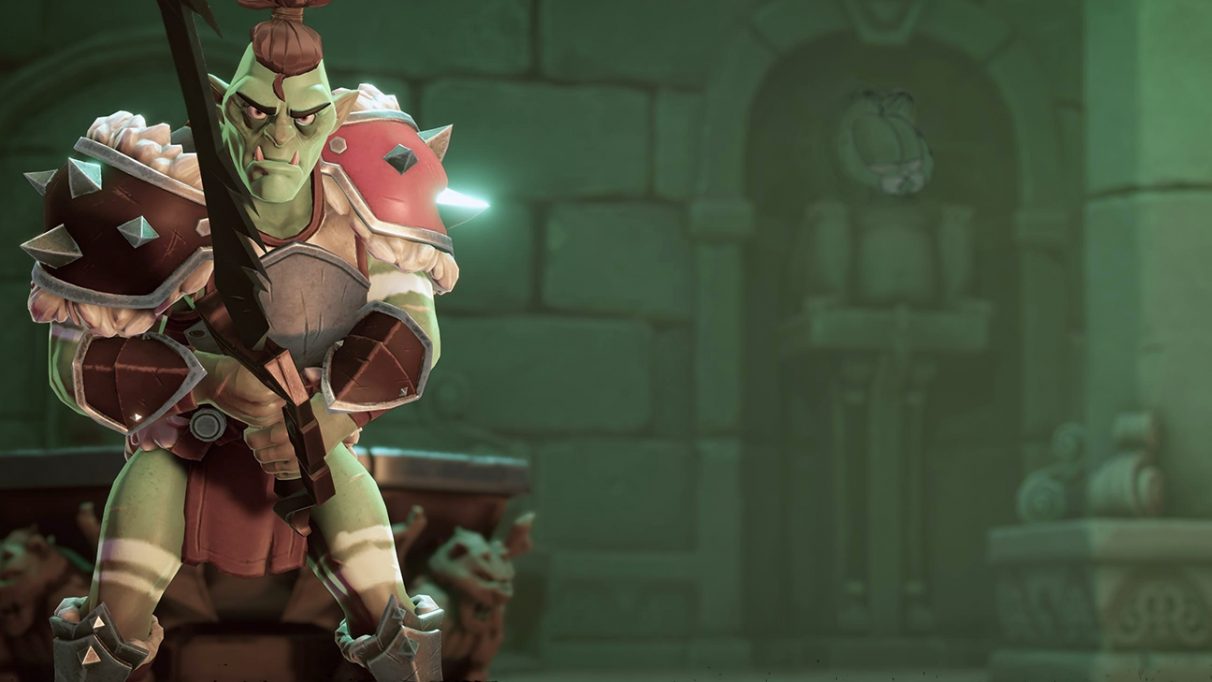
But then, there’s all the stuff that’s “surreal”, but in the sense that fools use the word. The running jokes about ker-ayzee chickens, for example. And the frequent, drunken swerves into the fringes of the “monkey cheese RANDOM” humour purveyed by rubbish “geek culture” webcomics in the mid-2000s. There are fart and poo gags. There is reference humour (“I used to be an adventurer until I took an arrow to the knee”, in 2020. Yes, really). There’s a lot of swearing for the sake of swearing, which is funny while it’s fresh and surprising, and slightly grating thereafter.
It never becomes obnoxious, and as I say, there are some gems in there. To be honest, I can think of plenty of mates who’d enjoy the stuff that made my eyes roll. Just be aware of it going in. Honestly, my biggest issue with the dialogue, and in fact the wandering-around-a-dungeon framing device in general, is the extent to which it dilutes the fighting. Because the battles were great, and I just wanted to keep having them.
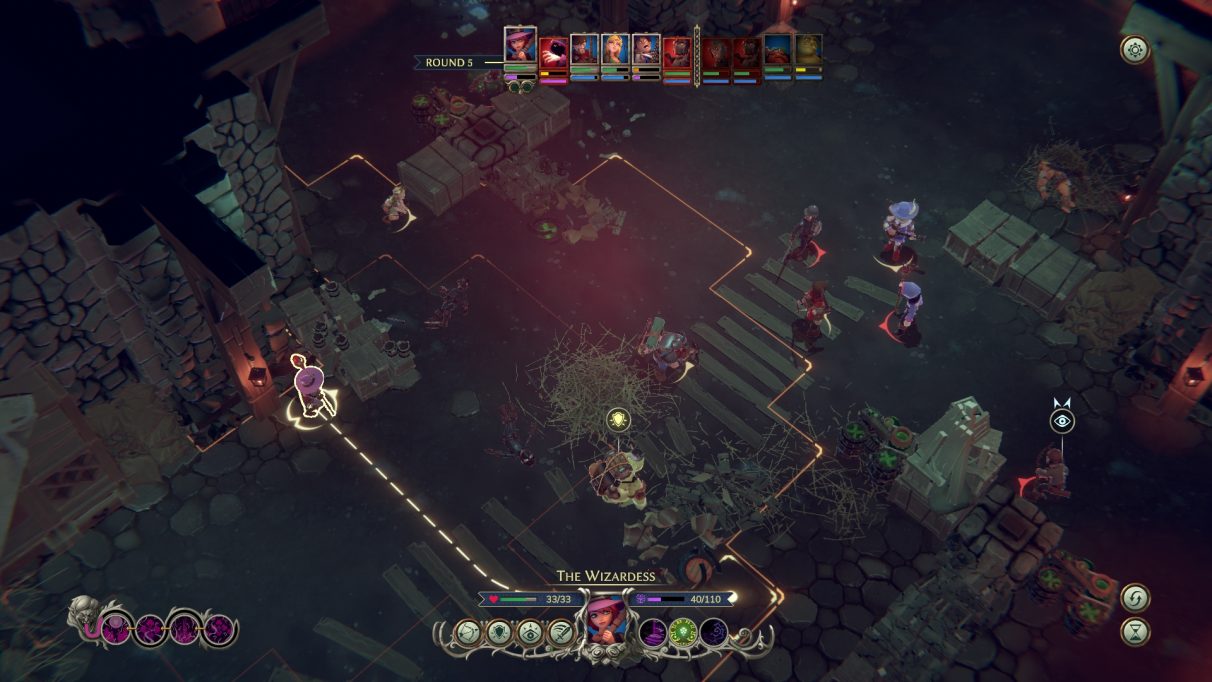
When I fell in love with Gears Tactics earlier this year, it was primarily because it was a no-frills, non-stop beef delivery machine, which let me mainline fights, with just enough Gears flavour in between to wash them down. But with Dungeon, I had to interpolate each mouthful of fisticuffs meat with a heaping portion of dialogue vegetables. And since the story is mostly linear, fight-encounter-fight-encounter stuff, I certainly got my five a day.
I think half the problem is what I mentioned at the top of the review – it’s not an RPG. If the dialogue branched significantly, or you made significant choices about who to help, or what have you, I might have been more invested in the exploration/dialogue segments. But as it was, it had the feeling of being trapped in a cutscene, where I had to do the work of moving the characters around.
It’s worth saying, however, that the environments you’re wandering through in Dungeons are lovely. It’s a beautiful game with an outstanding level of polish, and consistently impressive art direction. There was a moment where my party walked out of a bit of dungeon onto a rampart on top of a dizzyingly high wall, and the combination of perspective and focus blur made the view genuinely awe-inspiring. I did not expect that at all. It’s almost a shame there isn’t more overall variety in the environments on show, because I would have loved to have seen that art team unleashed on some weirder stuff.
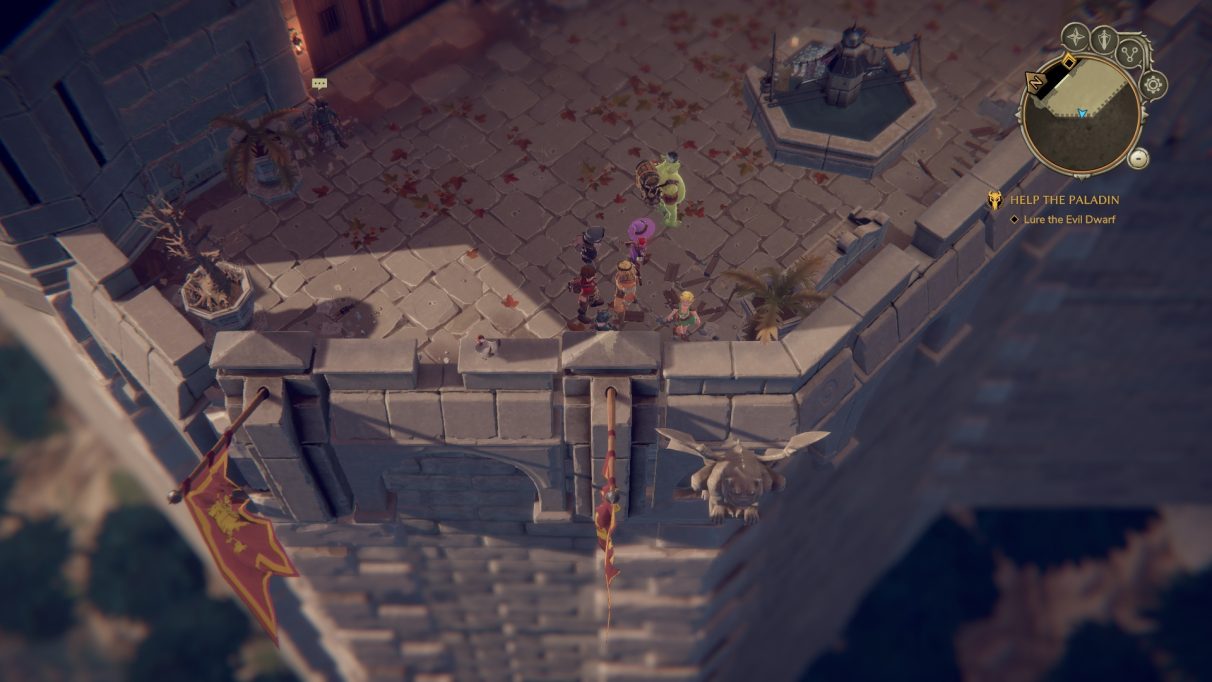
Beyond the script and the art, the other place where I could see the sheer amount of work that went into Dungeon – and which moves the game to ‘recommend’ from ‘lukewarm hand-waggle’ – was the design of the actual turn-based combat system.
Again, there’s not a lot that’s wildly divergent from what you’d expect from anything post-XCOM, and I really hate spending paragraphs and paragraphs describing rules. I suppose there are three things that made the combat stick out for me, and the first of those was the importance of positioning. With this being a fantasy setting, melee combat is more common than ranged, and so considerations like backstabbing, attacks of opportunity, and character adjacency take precedence over overwatch and cover.
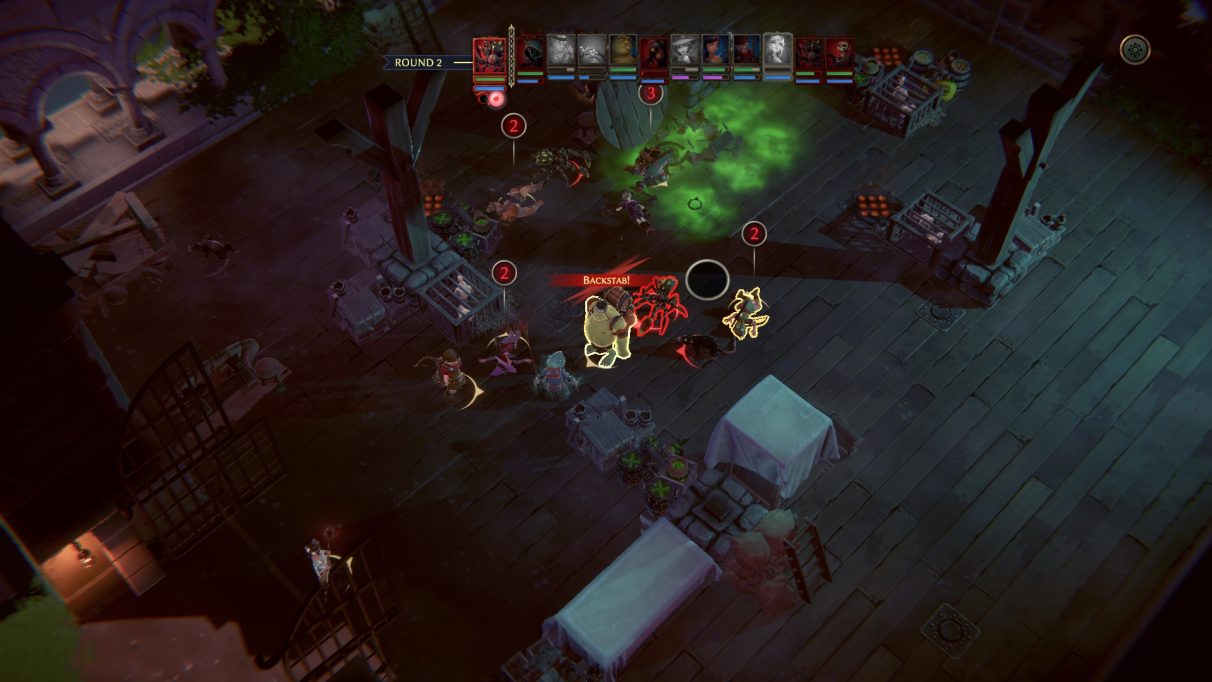
The second thing I noted was the ruthlessly efficient presentation of information. The game gives you every bit of information you could possibly want to glean about your characters and their opponents, and puts it in a sensible, intuitive place. A tactics game can only be as good as the information it gives you, and in that sense, Dungeons has the raw materials for excellence.
But that’s different from being excellent. Tactics games should be about tough decisions between limited options, all of which have clear risks and rewards. Partly because you’re always fighting with a large party, and partly because you’re given so much information to work with, combat is freighted with plenty of “guess I’ll just do this” moments, where you can’t be arsed to run the numbers on six different spiders, as it would make the fight go on for hours.
I think there’s a bit of a tonal issue there, too. Because of the game’s overall silliness and sense of knockabout harmlessness, and the lack of permadeath, there’s no real tension to make you sweat over decisions. “Who cares if the barbarian dies,” you think. “He’ll be back later, so I might as well just run him into that load of skeletons and see what happens.”
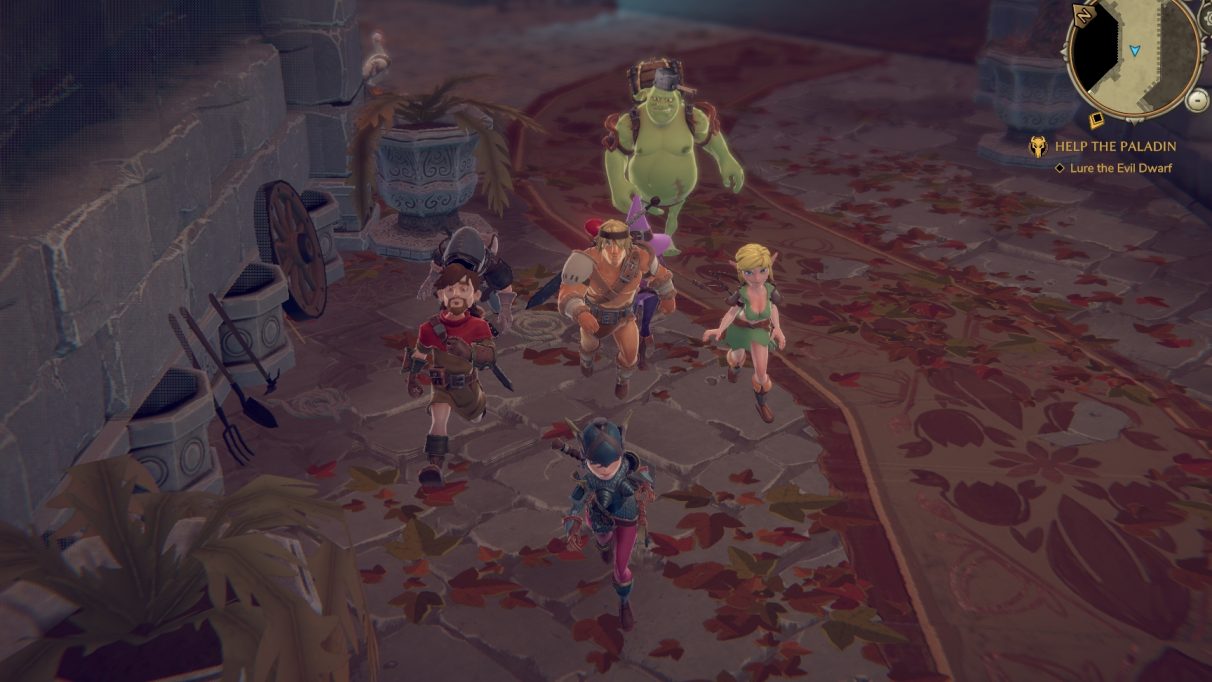
This butts awkwardly against the third thing to note about combat in Dungeon, which is that it’s bastard hard, even on its default setting. A couple of hours in, fights started becoming ludicrous tag-team affairs, where my main efforts were towards keeping at least one healer alive, in order to resurrect the four-or-so party members lying unconscious at death’s door at any given moment. But hey, I enjoy a tough tactics game, and there’s an easy setting if you’re more in it for the adventure.
Oh, and if you’re the sort of person who gets really angry at Ye Olde RNG, be warned: people seem to get very angry about it in this game, and I’ll admit it did feel like my party had a bad case of butterfingers at times. From developer responses to salty Steam reviews, it seems some of this is an intentional dovetail with the game’s slapstick tone. But it can be irritating all the same.
So there you go. If you like XCOM-ish things, The Dungeon Of Naheulbeuk should be in your library – just so long as you don’t mind a bit of hamfisted zaniness. I don’t think it’s one you’ll want to replay again and again, but it’s a substantial, well-crafted effort that’s definitely worth your time. Admittedly it’s no Garfield Kart, but it’s unreasonable to expect a developer to produce two once-in-a-generation masterpieces on the trot, after all.



















![The Year of Incline [2014] Codex 2014](/forums/smiles/campaign_tags/campaign_incline2014.png)

 /
/












